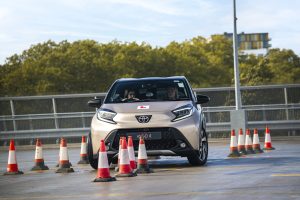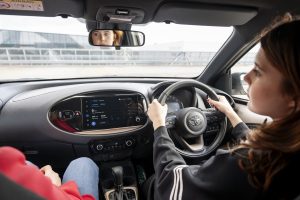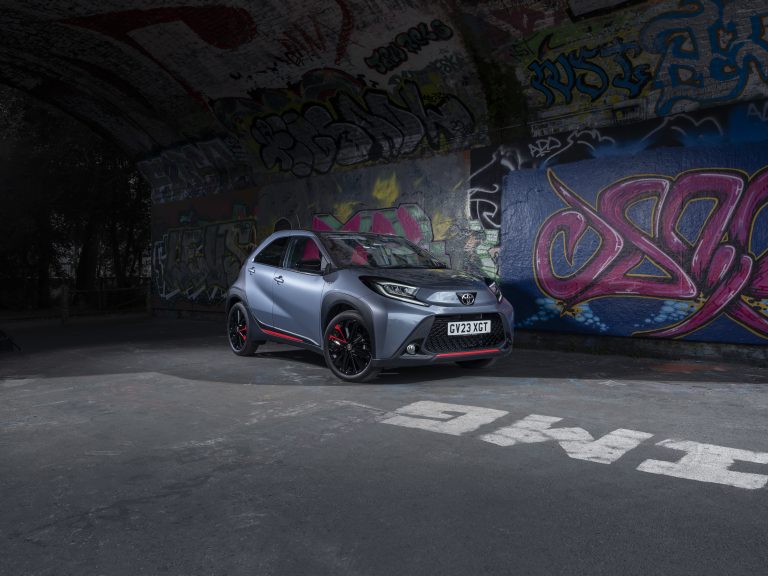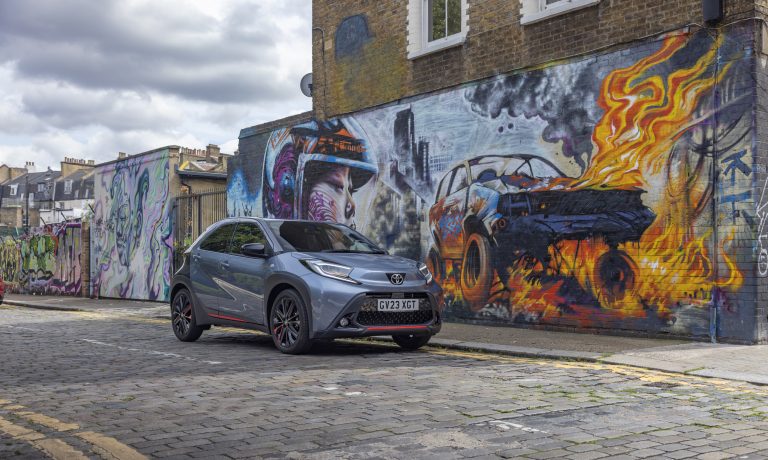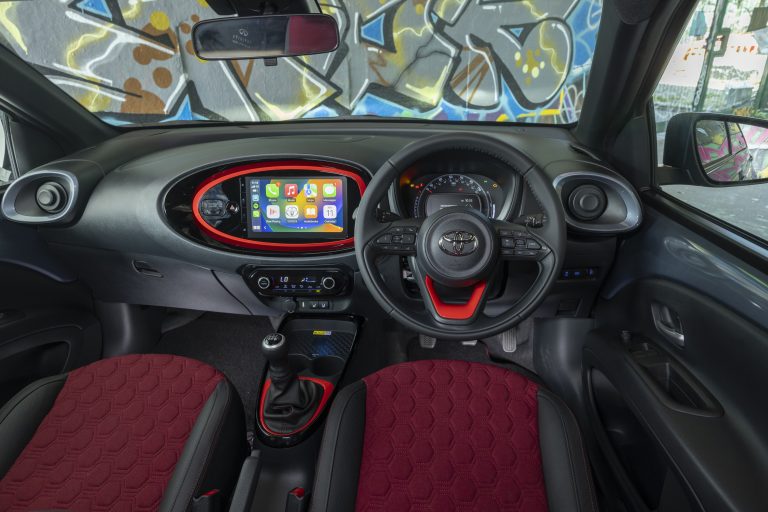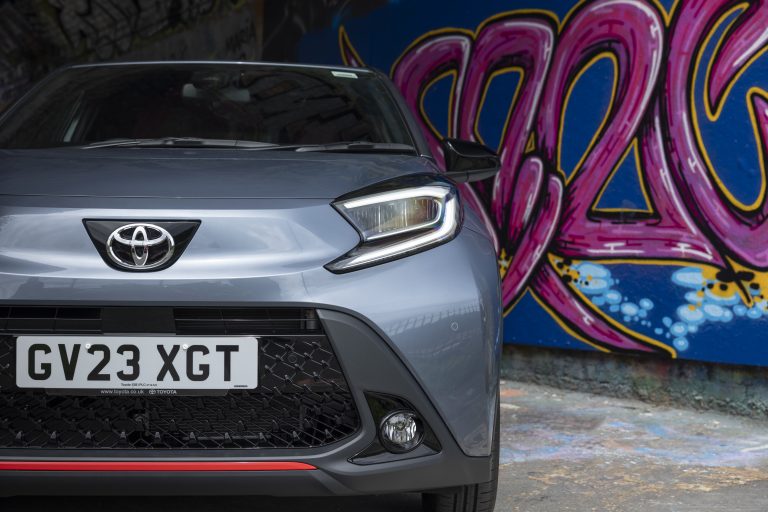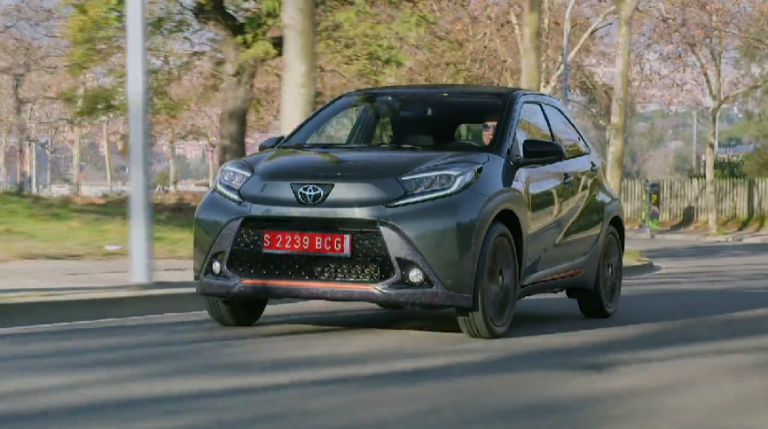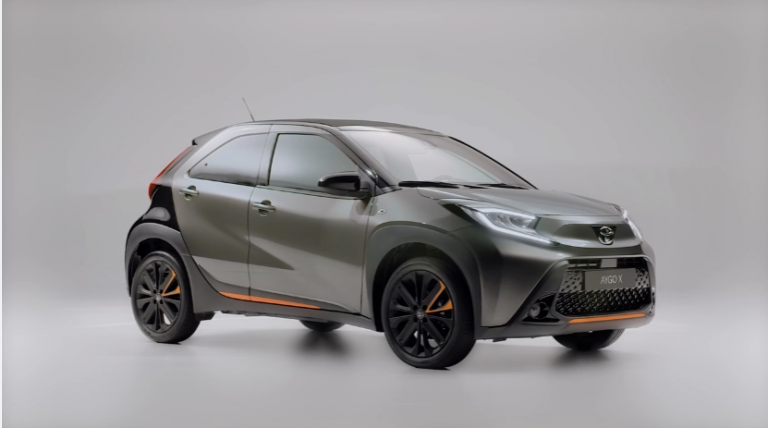From diving to driving – Toyota ambassador Andrea Spendolini-Sirieix and her mother Alessandra share top tips for learner drivers
Top British diving medallist and Toyota ambassador Andrea Spendolini-Sirieix is experiencing a different type of trepidation to the kind she feels at the top of a diving platform, as she takes on the challenge and thrill of learning to drive. She began taking driving lessons two months ago and regularly practises her new skills with her mum Alessandra Spendolini*.
A new film published on Toyota social channels shows the pair in action in a private car park overlooking the city of London: Andrea Learns to Drive (film)¹.
Here Andrea and Alessandra share their tips on learning to drive:
Andrea
- How to keep nerves under control
Feeling fear is something I experience every time I stand at the top of a diving platform and I feel a similar sensation when I get into the car, but like learning anything new, driving is all about practising: at first it’s scary, but it’s important to keep going, one lesson at a time and to ensure that you’re learning. - Learning something new is always a little nerve-wracking. With driving you also have to know the rules of the road and maintain your concentration. It can be hard, but I think driving’s a skill everyone should have.
- Learning challenging skills or manoeuvres
There will always be some aspects of learning to drive that you find easier than others. For example, when turning, I find it particularly difficult moving the wheel back to its original spot quickly as I am conscious of not wanting to hold up traffic. - I think it helps to gain confidence if you have a car to practise in that is simple and easy to drive – my Aygo X is ideal as it’s uncomplicated and a smooth drive. I also gain confidence from the fact it has built-in safety features like pedestrian and cyclist detection and lane assist if I accidentally cross any white lines.
- Help and encouragement
My mum has really helped with tips and encouragement and she doesn’t seem nervous, which gives me confidence. She uses the words ‘actually good’ when I drive, which makes me laugh, as I think she wasn’t expecting me to be as good or confident as I am. So whichever qualified driver helps you practise your driving, they need to be calm, upbeat, and encouraging, whatever mistakes you make. They also need to be very patient, which my mum certainly is – she understands it’s a stressful process, so she helps me with constructive criticism.
- Where to practise
I’ve found it particularly useful in the early stages to go to a quiet car park to try out the skills I’ve learnt in my lessons, but I’m now progressing on to quiet residential roads where there’s not too much traffic.
Alessandra
- What’s in it for the person in the passenger seat
It can be hugely rewarding helping a learner driver practise their skills and passing on
your own knowledge and experience. I initially questioned Andrea’s driving
abilities because she didn’t seem interested in learning – she’s a princess who enjoys
being chauffeured around! However, I now have complete faith in her; she’s a fast
learner and has quickly gained confidence when driving. Her skills are
improving with each lesson.
- Balancing guidance with independent learning
I think the driver sitting in the passenger seat has to learn to let go of control. This is another step toward adulthood – Andrea is 21, and I consider her capable of making her own decisions and being independent. She has shown me that she is confident, so I trust her and the process. She’ll be a great driver – F1 is the future!
Above all it’s important to have faith and to encourage your learner driver with positive words. They must feel that you trust them. Keep it together; just offer encouraging, uplifting and positive words and teach them to be safe and alert while driving. It will be fun!
- When the road gets bumpy
Learning to drive isn’t a smooth process and while some skills come naturally, others may take more time to master. It’s important to let the learner driver know it’s okay to make mistakes or get stuck on a roundabout. Don’t panic, be alert and safe. Tell them to breathe, reset, check the road and mirrors and off you go. Drive with care and be responsible and enjoy the drive!
ENDS
Notes to editors:
*To legally supervise a learner driver in the UK, the person in the car must be at least 21 years old, hold a full licence for at least three years, be qualified to drive the specific type of vehicle (e.g., manual), meet the eyesight standards, be permanently resident in the UK, have the correct insurance, and sit in the front passenger seat.
You need your own insurance as a learner driver if you’re practising in a car you own. Your family member or friend will usually be covered on this.
If you’re practising in someone else’s car, you need to either:
- make sure you’re covered by the car owner’s insurance policy as a learner driver
- take out your own insurance policy that covers you driving in the car as a learner driver
- Some insurance companies require the person supervising a learner driver to be over 25 years old.
¹The filming took place on a private closed car park and kept to a 20mph speed limit.





